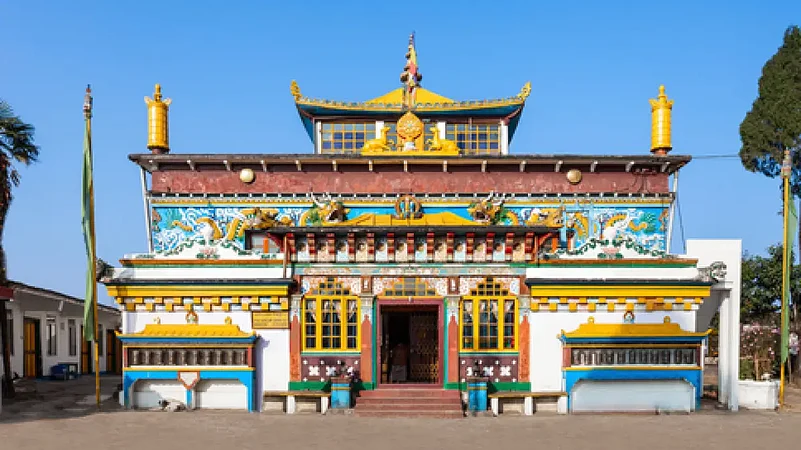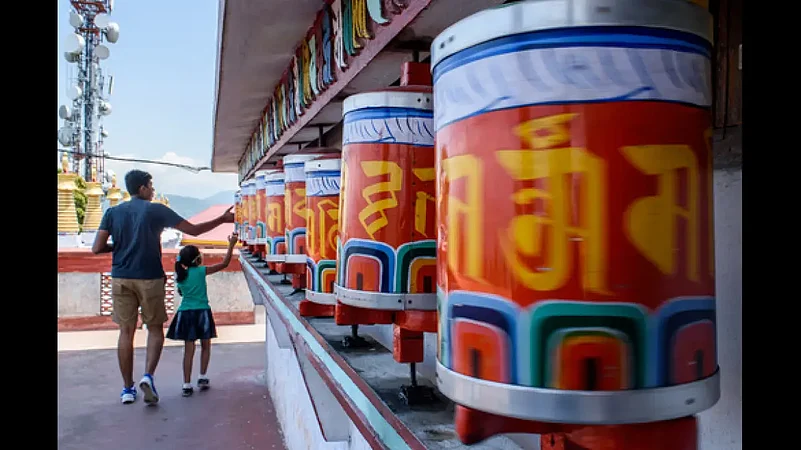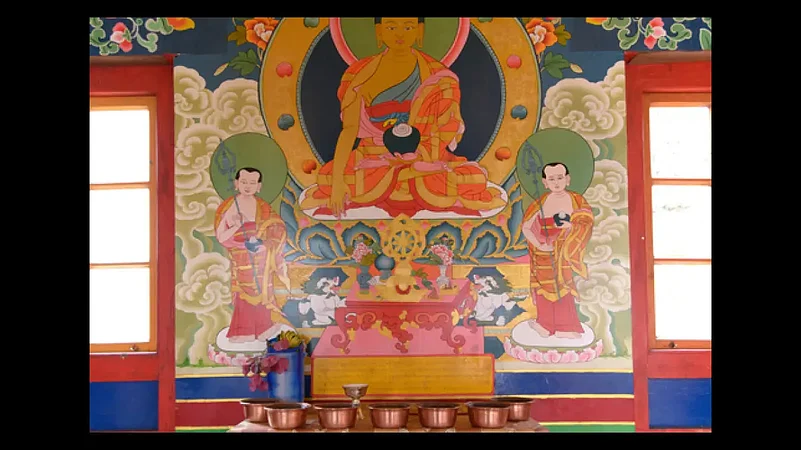Sharing cultural and religious bonding with Bhutan, Nepal, Sikkim and Tibet, the Darjeeling hills are dotted with monasteries belonging to various sects of Buddhism. Depending on their importance in the religious order and the patronisation received, not all monasteries are large or built elaborately. While some are architecturally grand, others may appear humble. But nearly all have beautiful frescoes on their walls, a collection of religious texts and votive objects. Some of the monasteries are perched at an elevation and hence offer a panoramic view of the snow peaks or the surrounding hills and valleys, weather permitting. Each monastery has its own calendar of festivals, some of which are extremely colourful. With the key tourist towns of Darjeeling, Kalimpong and Kurseong as your base, take a look at some of the key monasteries of the region.

Darjeeling
Yiga Choeling: Popularly known as the Ghoom (Ghum) monastery, it is located about 8km away by road from Darjeeling town. Perched at 2,438 meter, the monastery lies beyond the Ghoom station of the Darjeeling Himalayan Railway (toy train), the uphill road going through a local market. Established in 1850, it was built by a Mongolian monk and astrologer, Sokpo Sherab Gyatso. Maitreya or the Future Buddha is the presiding deity here. The design reflects a strong Chinese influence, such as the flying sky dragons on the upper walls.
Samten Choeling: Also located in Ghoom, this colourful monastery looms over the road connecting the town with Darjeeling. You may stop here on the way back from the early morning ride to Tiger Hill.
Dali Gompa: This very Tibetan looking monastery is younger than its neighbours but looks splendid. Located off the Hill Cart Road, it is about 5km from Darjeeling town. This monastery has been drawing a lot of visitors. You are likely to be allowed inside to watch the daily rituals and prayer sessions but it is advisable to seek permission at such hours.
Bhotia Busty monastery: According to an entry in an old Bengal District Gazetteer, this monastery was originally founded on the top of Darjeeling’s Observatory Hill. It was a branch of the Dalling Monastery of Sikkim. But ravaged by a Gurkha army in the 19th century, it was rebuilt at its present location, a little more than a kilometre from Darjeeling’s Chowrasta/The Mall. Weather permitting, you are likely to catch a magnifincent view of the snow ranges from here.
Aloo Bari Gompa: This old monastery located off Tenzing Norgay Road is one of the lesser known monasteries of Darjeeling. It sits in the middle of a tightly knit hamlet.
Mak Dhog Gompa: More than a century old, this monastery has been founded by a community who migrated to this region from the Langtang area of Nepal. The main shrine contains an image of Guru Padmasambhava.

Kalimpong
Zong Dog Palri Fobrang: Perched on the Durpin Dara, about two km away from the town centre, the monastery was built in 1937. Inside, you will find colourful frescoes, painted scrolls (thangka), and idols of Guru Padmasambhava and Avalokitesvara. Perched at a height of 1,732 meter, it offers a panoramic view of the surrounding hills and valleys on a clear day.
Tharpa Choeling Gumpha: At the other end of the town is the Delo hill. Perched on this hill, at a height of 1,704 meter, is this 1837 built monastery. It belongs to the Yellow Hat sect. There is a museum above the main monastery.

Kurseong
Kurseong Monastery: Located some distance away from Kurseong’s Toy Train station, this is one of the least known Buddhist monasteries in the region. There is a nunnery attached to the monastery. The wall paintings depict Lepcha folk culture.
Sonada Monastery: Lying between Ghoom and Kurseong, Sonada is better known as a quaint stop on the DHR. But you can also take a look at the Samdrup Darjay Choling Monastery. It is said that the main shrine contains a mummified statue of the Vajradhara lama. Even if you do not find the shrine open, you can always take a walk around the premises. But tread gently through the sacred groves.
Note: While most monasteries remain open throughout the day, those in remote corners may be closed outside of prayer timings. But ask around and there may be someone who can open the doors for you. Many monasteries allow visitors to watch them at prayers. But do ask for permission always, before entering or photographing. You may also be invited to share a frugal meal. Donations are not must but welcome.
















